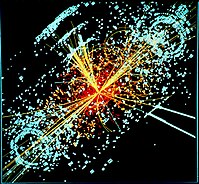
Photo from wikipedia
Zongping Gong,1, 2 Robert H. Jonsson,1, 2 and Daniel Malz1, 2 Max-Planck-Institut für Quantenoptik, Hans-Kopfermann-Straße 1, 85748 Garching, Germany Munich Center for Quantum Science and Technology, Schellingstraße 4, 80799 München,… Click to show full abstract
Zongping Gong,1, 2 Robert H. Jonsson,1, 2 and Daniel Malz1, 2 Max-Planck-Institut für Quantenoptik, Hans-Kopfermann-Straße 1, 85748 Garching, Germany Munich Center for Quantum Science and Technology, Schellingstraße 4, 80799 München, Germany (Dated: March 15, 2022) Supersymmetry, originally proposed in particle physics, refers to a dual relation that connects fermionic and bosonic degrees of freedom in a system. Recently, there has been considerable interest in applying the idea of supersymmetry to topological phases, motivated by the attempt to gain insights from the fermion side into the boson side and vice versa. We present a systematic study of this construction when applied to band topology in noninteracting systems. First, on top of the conventional ten-fold way, we find that topological insulators and superconductors are divided into three classes depending on whether the supercharge can be local and symmetric, must break a symmetry to preserve locality, or needs to break locality. Second, we resolve the apparent paradox between the nontriviality of free fermions and the triviality of free bosons by noting that the topological information is encoded in the identification map. We also discuss how to understand a recently revealed supersymmetric entanglement duality in this context. These findings are illustrated by prototypical examples. Our work sheds new light on band topology from the perspective of supersymmetry.
Journal Title: Physical Review B
Year Published: 2022
Link to full text (if available)
Share on Social Media: Sign Up to like & get
recommendations!